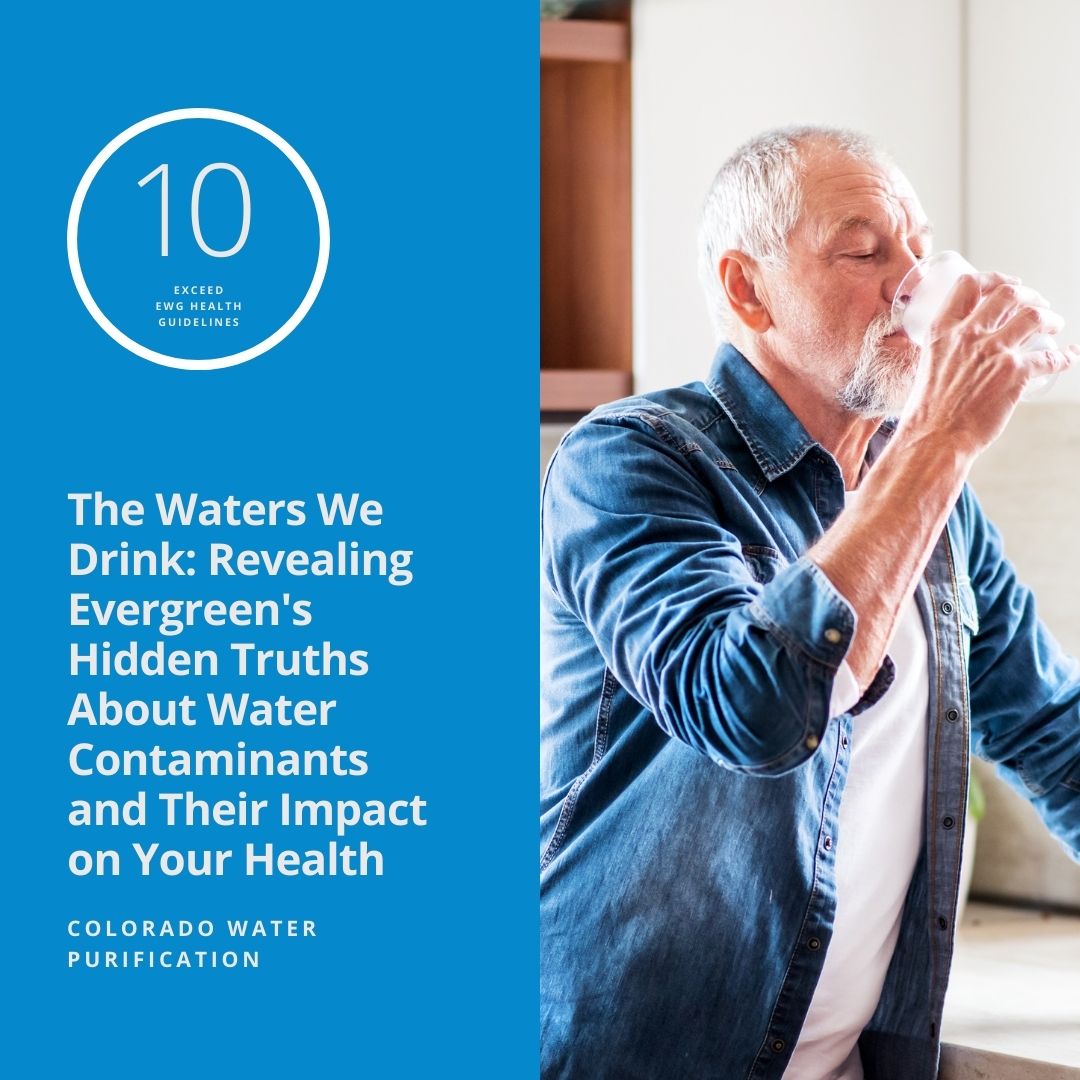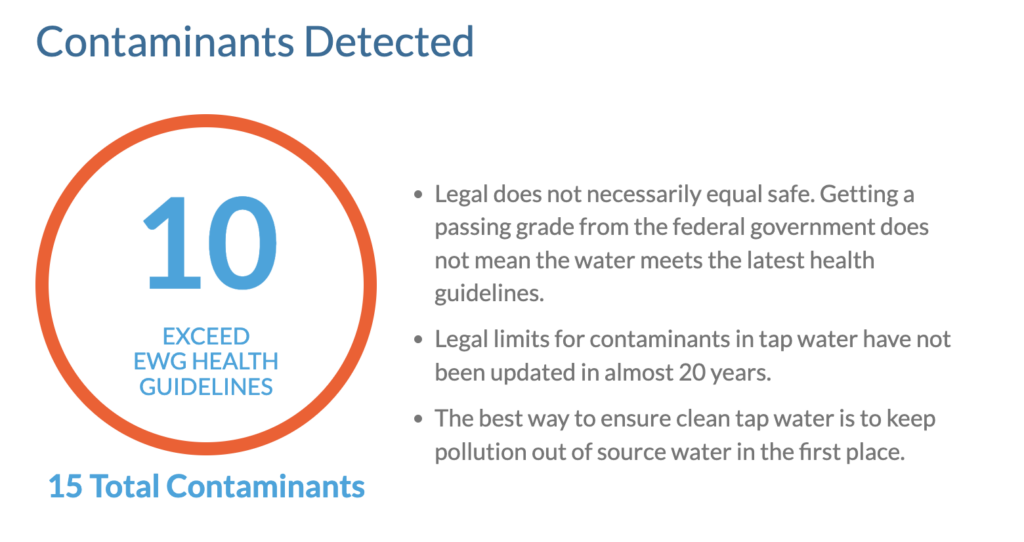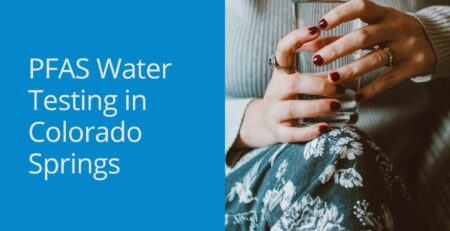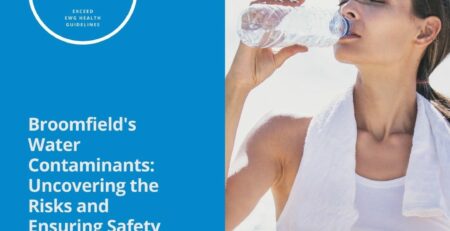The Waters We Drink: Revealing Evergreen’s Hidden Truths About Water Contaminants and Their Impact on Your Health
Nick2023-07-05T11:55:35-06:00Water is an essential element of our daily lives, but have you ever wondered about the potential contaminants lurking in your drinking water? Join us as we uncover the truth about Evergreen, Colorado’s water supply and the presence of harmful contaminants that may impact your health. Based on the EWG health guidelines, we’ll shed light on these hidden dangers and empower you with knowledge to protect yourself and your loved ones.
Barium: The Nervous System’s Nemesis
Discover the potential risks associated with barium, a naturally occurring metal found in Evergreen’s water supply. Uncover its harmful effects on the nervous system and its potential to cause kidney damage. Understanding the implications of this contaminant is crucial for safeguarding your well-being.
Chloroform: Unmasking a Carcinogenic Chemical
Peel back the layers to reveal chloroform, a chemical formed during water disinfection using chlorine. Explore its classification as a known carcinogen and its potential to cause cancer. By raising awareness, we can make informed choices to minimize our exposure.
Chromium (Hexavalent): Toxicity Unveiled
Delve into the realm of hexavalent chromium, a toxic metal with serious health implications. Uncover its links to cancer, liver damage, and kidney damage. Equipped with knowledge, we can take proactive steps to protect ourselves from its harmful effects.
Dibromoacetic Acid: A Carcinogenic Concern
Investigate the presence of dibromoacetic acid, a carcinogenic compound formed during water disinfection. Understand the potential risks it poses and its link to cancer. By unraveling the truth, we can make informed decisions about our water consumption.
Dibromochloromethane: Unmasking the Carcinogen
Unveil the presence of dibromochloromethane, another carcinogenic byproduct of water disinfection. Learn about its classification as a known carcinogen and its potential to cause cancer. Empower yourself with knowledge to make informed choices regarding your water usage.
Dichloroacetic Acid: A Carcinogenic Culprit
Explore the dangers of dichloroacetic acid, a known carcinogen formed during water disinfection. Gain insights into its potential to cause cancer and the importance of minimizing exposure. Understanding its impact is vital for protecting our health.
Haloacetic Acids (HAA5): Unveiling the Carcinogenic Group
Delve into the domain of haloacetic acids, a group of chemicals formed during water disinfection. Uncover their classification as known carcinogens and their potential to cause cancer. By staying informed, we can make conscious choices to reduce our exposure.
Haloacetic Acids (HAA9): A Closer Look at Carcinogens
Take a deeper dive into haloacetic acids, exploring their extended impact on our health. Understand their classification as carcinogens and their potential risks. Empower yourself with knowledge to make informed decisions regarding your water consumption.
Nitrate: Protecting the Most Vulnerable
Shed light on the dangers of nitrate, a naturally occurring chemical that can harm infants, especially those under 6 months old. Explore its link to methemoglobinemia, a condition leading to blue baby syndrome. Learn how to safeguard the most vulnerable members of our community.
Strontium: Beyond Bones
Unearth the presence of strontium, a naturally occurring metal that can harm our bones and potentially cause cancer. Understand the risks associated with this contaminant and take steps to minimize its impact. Prioritize your health by staying informed.
Although the levels of these contaminants in Evergreen’s water supply generally fall below the EPA’s health advisory levels, it’s important to note that sensitivity to these contaminants may vary among individuals. Being aware of their presence empowers us to make informed decisions about our water consumption.
If you have concerns about your drinking water quality, consider reaching out to your local water utility for more information. Additionally, you can have your water tested by a private lab to gain a comprehensive understanding of its composition.
Remember, the EWG health guidelines are more stringent than the EPA’s advisory levels, prioritizing the latest scientific research and potential health risks. If you have any concerns about the quality of your drinking water, consult with your doctor for personalized guidance.
To reduce your exposure to these contaminants, consider taking steps such as filtering your water using suitable water filters, boiling your water for at least one minute to eliminate bacteria and viruses, or switching to bottled water if you have concerns about tap water quality. Prioritizing your health is paramount, and being proactive in minimizing exposure to contaminants can contribute to your overall well-being.













